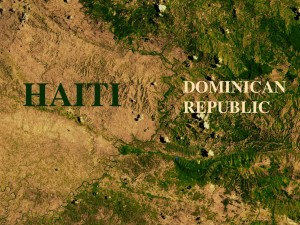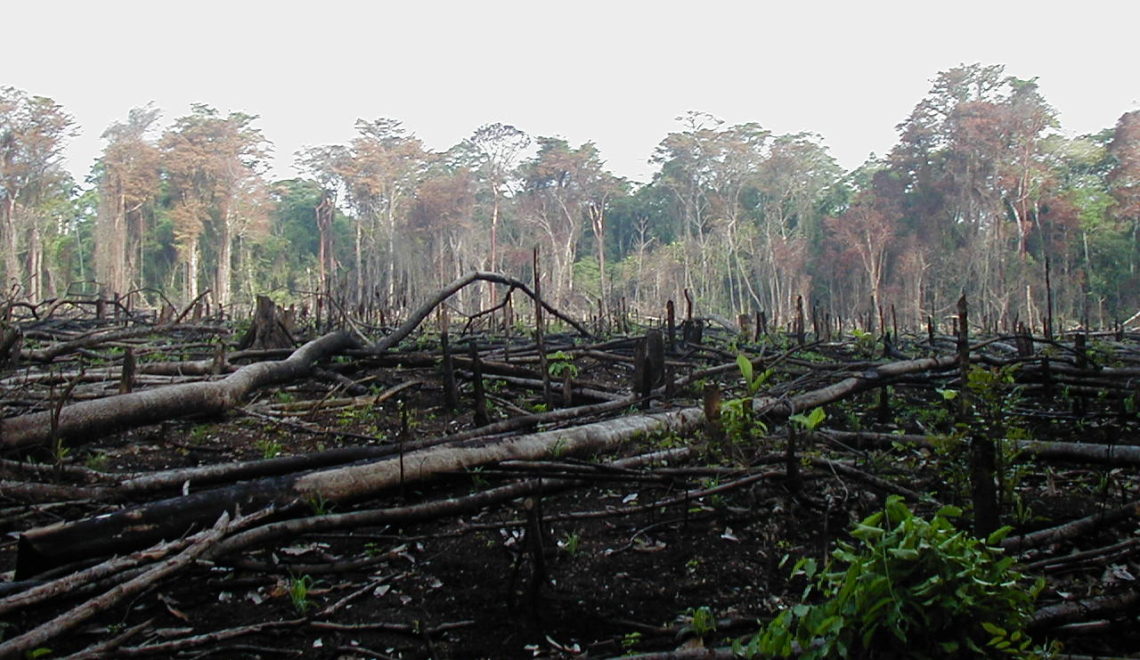
This month, we’re turning our attention to a major global issue: deforestation. Learn how you can help reforest the planet by making small changes in your lifestyle, buying sustainable products, and spreading awareness in your community.
This summer, we were awed by the incredible physical feats of Olympic athletes in Rio de Janeiro. But a more daunting story is still unravelling on the other side of the country. Home to over 390 billion trees, the Amazon is the largest — and most important — rainforest in the world. Unfortunately, these vital environments are shrinking at an astonishing rate, and the consequences are severe: fewer trees means higher temperatures, barren landscapes, and decreasing biodiversity. This week, take a break from the Olympics to learn about the causes of deforestation, solutions to the problem and what you can do to help.
What is deforestation?
According to the World Preservation Foundation, deforestation is the practice of clearing the planet’s natural forests for the purpose of agriculture, logging and ranching. Through the loss of forests, the planet loses its main source of oxygen. People also lose other benefits like food, water, clothing, medicine and shelter.
Where does deforestation occur?
Forests only cover seven percent of the Earth’s surface, but house 50 percent of all plant and animal species. Deforestation is also heavily concentrated. Though deforestation takes place everywhere in the world, seven countries make up 60 percent of all deforestation: the U.S., Canada, Indonesia, China, Russia, the Democratic Republic of Congo, and Brazil.
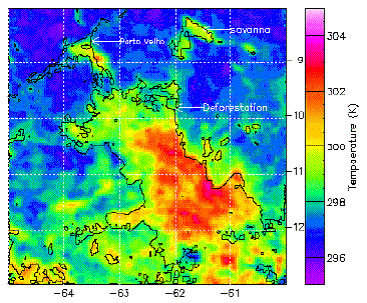
Effects of deforestation in Brazil on cloud cover (Photo by NASA)
Deforestation in Brazil
Brazil is home to one-third of the world’s remaining rainforests and loses an average of 21,536 square miles each year, which is roughly the size of Panama. In 2005 and 2010, the Amazon River experienced increases in drought periods and rises in annual river flows above the seasonal norms. The increase in runoff into the Amazon River has been largely attributed to deforestation since trees help to slow down and absorb rain, reduce flooding, and soil erosion.
This decrease in annual rainfall also affects Brazil’s neighboring countries: Peru, Bolivia, Paraguay, and Colombia. Unfortunately, the people who are most affected by climate change are indigenous peoples and poor farmers who rely on crops to feed and support their families.
Climate Change and Deforestation
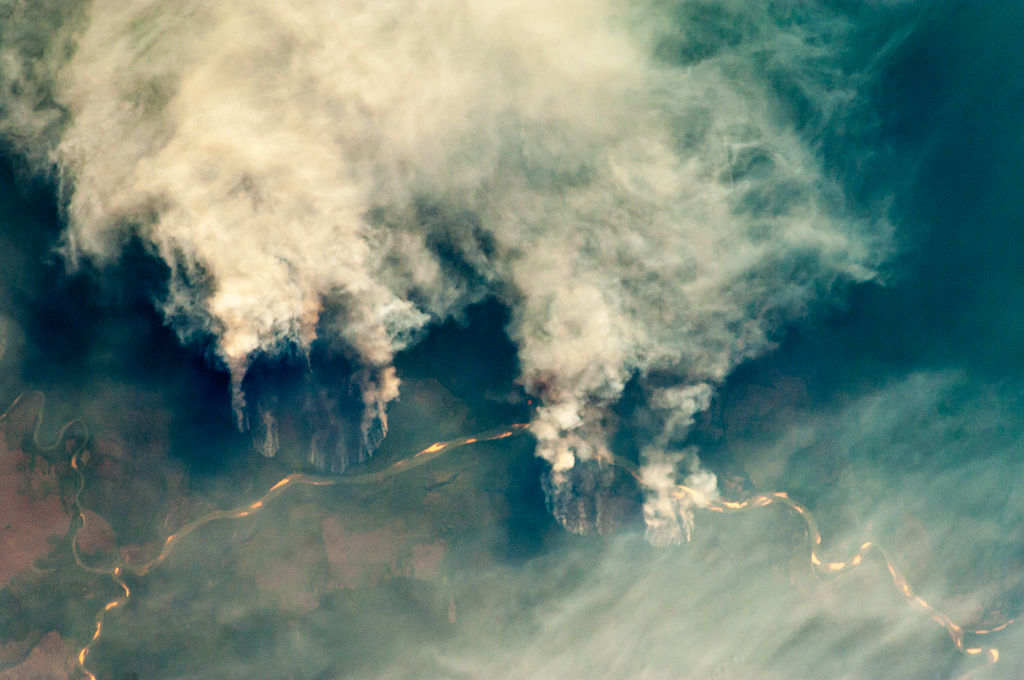
Slash-and-burn forest clearing along the Rio Xingu (Xingu River) in the state of Mato Grosso, Brazil. (Photo by Image Science & Analysis Laboratory)
A forest is not just a collection of trees; it is an entire ecosystem that houses some of the most biodiverse species on Earth. Trees are the biggest promoters of the carbon and water cycles, two processes necessary for the existence of life as we know it. Studies are now proving that trees can even communicate with each other during times of stress.
Cutting down forests can cause the following:
- Disruption of hydrological cycles: trees help move water from the ground into the air. Then, the water molecules form rain clouds that recycle the water back to the earth. When trees are cut down, less water is pulled up from the water table and into the atmosphere, which changes weather patterns, precipitation cycles, and the flow of rivers, like the Amazon.
- Degradation of wildlife habitat: increased soil erosion and the loss of tree cover means that the land can no longer support the same number of wildlife and plant species. Since ecosystems work together, the loss of one species may mean the disappearance of another.
- Release of greenhouse gases: carbon released into the atmosphere increases global temperatures since the carbon molecules become trapped. According to the World Wildlife Foundation, tropical forests hold more than 210 gigatons of carbon and deforestation accounts for 15 percent of greenhouse gas emissions. Increased temperatures can also cause changes in animal behavior and weather patterns. Current examples include longer drought periods in California and tropical fish migrations from the equator.
Deforestation and Economy
Sub-Saharan Africa and Haiti are two poignant examples of how deforestation can lead to poverty. Which one is the cause or effect of the other is debated, but the links between tree loss, fertile soil, and loss of economic productivity are clear. As more land is cleared for subsistence farming, soil becomes exposed and dried out; nutrients are lost through flooding and water run off; and carbon is released from the ground, contributing to higher CO2 levels and global warming. In both Sub-Saharan Africa and Haiti, the resulting environment is dry, arid desert, social unrest, and economic decline as people compete for depleting resources.
Reforestation and Prevention
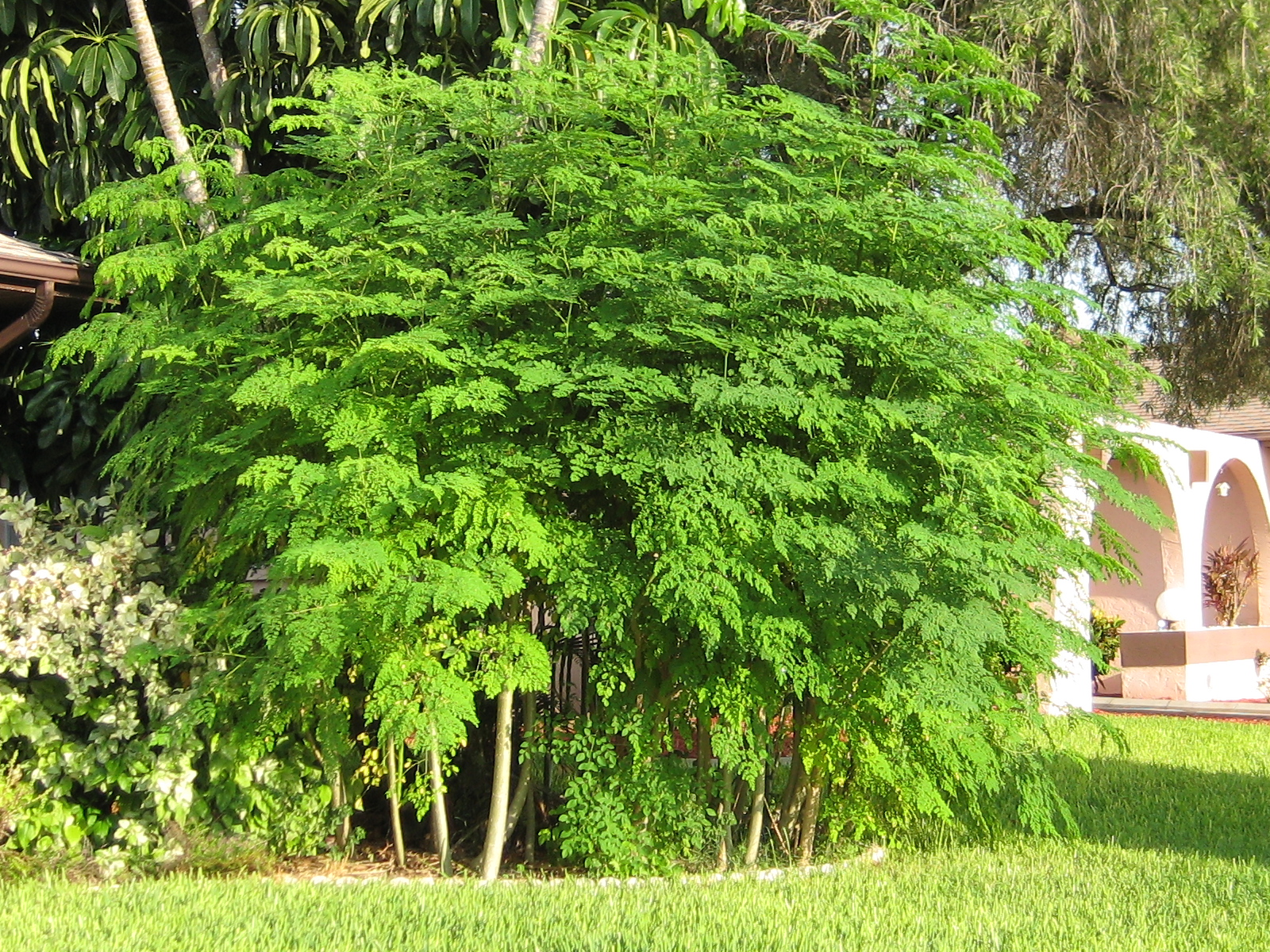
Moringa tree
Both reforestation and prevention are necessary to reduce future impact on the environment and the effects of climate change. To be successful, reforestation efforts should use native trees and diverse species. Native trees are best for supporting native wildlife and can thrive in the soil and weather conditions of the area. Biodiverse forests are also more resilient to pests, diseases and climate change. Richard Houghton, a leading expert on reforestation, said that global warming could be significantly curbed if we planted trees on just 500 million acres (or about one-fifth the size of Canada).
Teaching people about the importance of local forests and encouraging continued development of these areas is key to combating climate change. Projects for the reforestation and protection of land and trees are most successful when locals are involved since they can reap immediate benefits and prevent future destruction.
Businesses That Reforest the World
A number of businesses include reforestation as a major component of their business model. We’ve highlighted two of our favorites, and how Kuli Kuli is reforesting the planet:
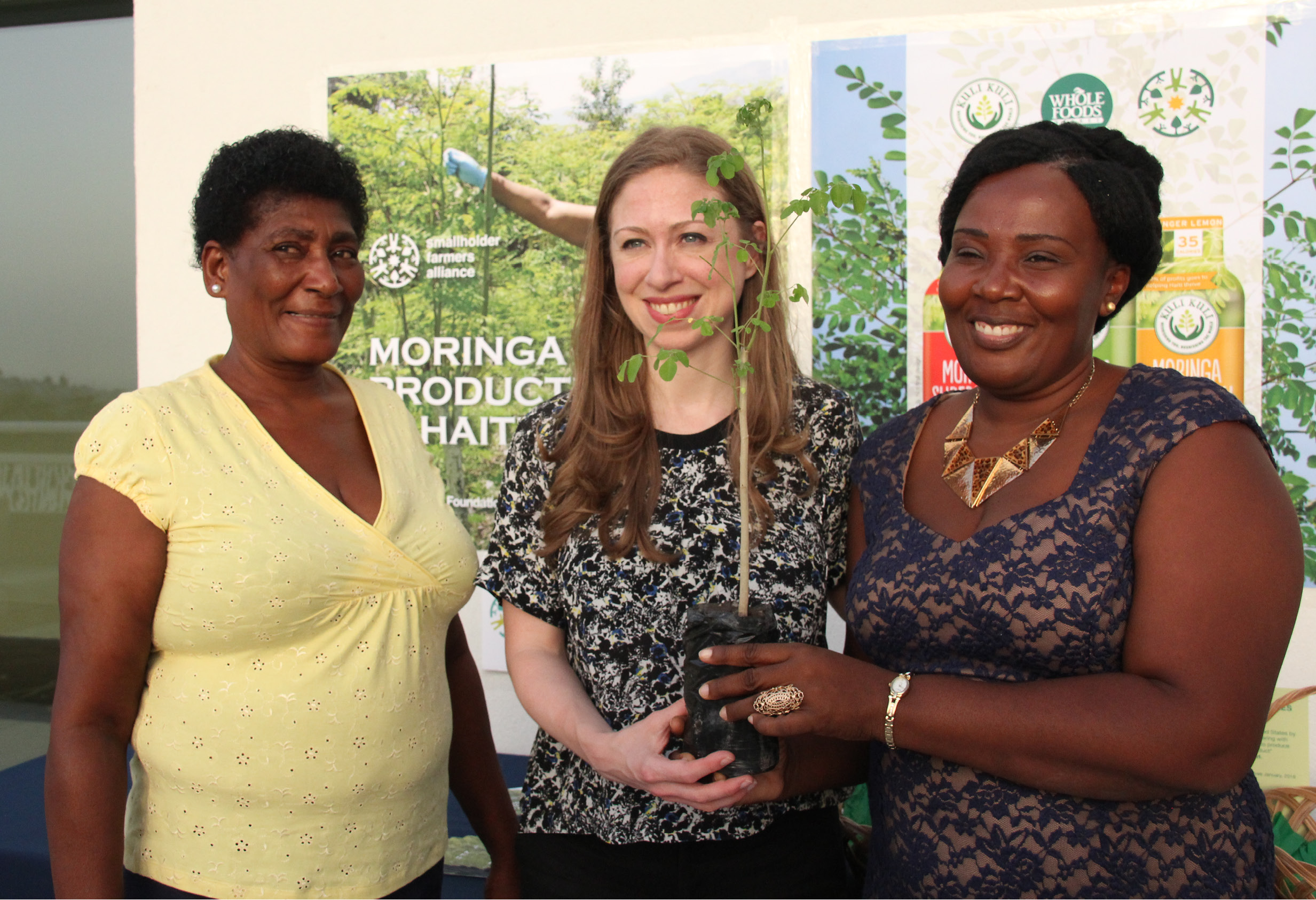
Chelsea Clinton with Kuli Kuli Moringa farmers
Noya + Trees for the Future
“We strive to create a community to initiate social change. For every product purchased we plant a tree.” – Christine Reppa, CEO and Founder, Noya
Noya is a yoga apparel company in Dallas, Texas, launched in April 2016. The company’s goal is to be an organization that lives and breathes with purpose. For every piece of yogi-friendly clothing sold, Noya’s partnering organization, Trees for the Future, plants a tree in one of five regions of Africa: Senegal, Cameroon, Uganda, Kenya and Tanzania. These trees are planted as a part of a Forest Garden Program where trees and crops help families feed themselves and generate income. Families who are part of this four year project see a 500 percent increase or more in income. To date, Noya customers have helped plant over 7,000 trees.
Alter Eco + Pur Project
“Food is fundamental to life, and we’ve made it our mission to positively impact the earth and our farmers across the globe.” – Edouard Rollet, Co-CEO and Co-Founder, Alter Eco
Known for their delicious, fair trade chocolates, Alter Eco has established a carbon insetting program – a project more aggressive than carbon offsetting – with over 30 countries in the Southern Hemisphere. Farmers help plant trees to offset the amount of carbon produced by every function of Alter Eco’s company and production. The company pays to have all trees planted and uses agroforestry to provide benefits to farmers. Since 2008, Pur Project has planted nearly 30,000 trees in the San Martin, Peru, a major source of Alter Eco’s cacao.
Kuli Kuli + Smallholder Farmers Alliance
“We’re proud that every moringa product we sell helps to plant moringa trees and support farmers in the developing world.” – Lisa Curtis, Founder and CEO, Kuli Kuli
Kuli Kuli is reforesting the planet by working with the Smallholder Farmers Alliance to plant moringa trees in Haiti. Moringa trees are the perfect crop for hot climates like Haiti because they don’t need much water to grow quickly. The trees can then shade other crops, keep fertile soil in place and nourish local communities. The best part is that the trees don’t need to be cut down during harvest: farmers can just harvest the leaves (not the entire plant), leaving the rest of the tree to provide long-term environmental benefits and sustainable living wages for farmers and their families. So far, Kuli Kuli has helped plant over 200,000 trees.
What You Can Do
Here are five ways that you can help stop deforestation and keep our planet healthy for generations to come:
- Eat sustainably by reducing your consumption of animal products and researching where your food is grown and how it impacts the environment.
- Buy sustainable products by making sure companies have environmentally-friendly policies in place reduce their impact on forests. You can also check to see that products have been certified by the Forest Stewardship Council.
- Reduce your carbon footprint by reducing your usage of paper products, going paperless, or buying recycled products. Whatever paper products you do buy can go in the recycling bin.
- Educate your community by starting a conversation with friends, family and colleagues about deforestation, and how it impacts your neighborhood. See if you can come up with your own ideas for reforestation and prevention. (We’d love to hear about them on our Facebook page.)
- Plant a tree in your backyard or neighborhood by researching which trees are native to your area and speaking to your local government and community.
#PlantATree Giveaway
Through the month of August, Kuli Kuli and Noya are hosting a special giveaway to raise awareness about deforestation. Enter to win by liking Kuli Kuli and Noya on Facebook. Then post a selfie with a tree, using the hashtag #PlantATree. Don’t be afraid to get creative with your photo since you could win awesome prizes from Kuli Kuli and Noya, which all help reforest the planet.

